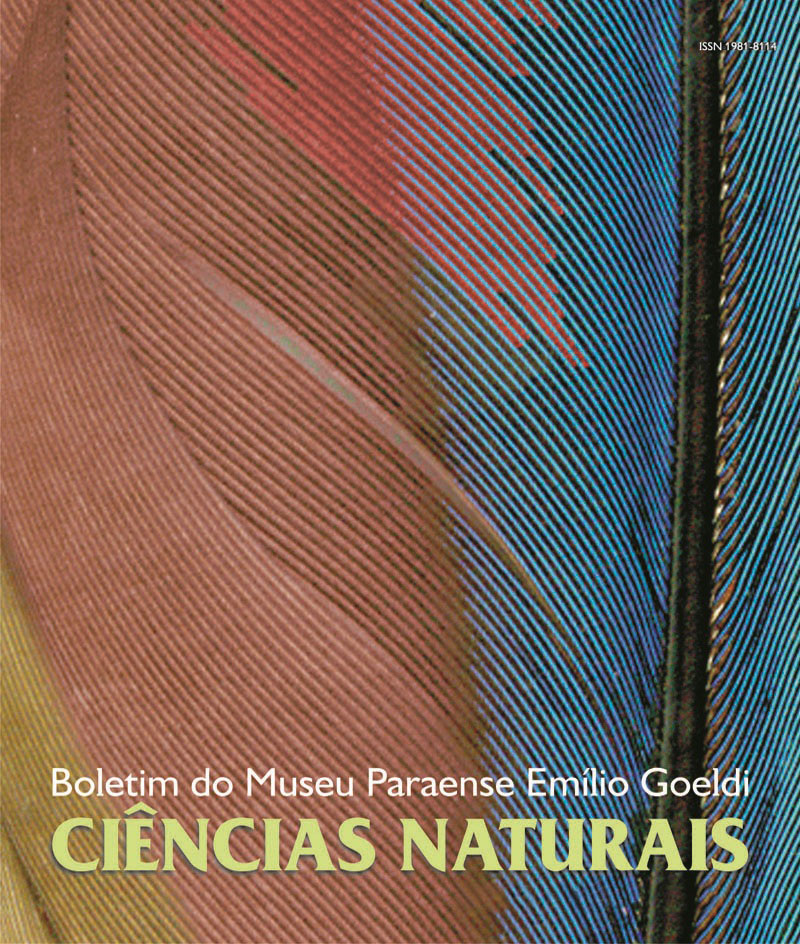Comparison of litterfall yield of two mangrove stands with different structural features on the Bragança peninsula, Pará
DOI:
https://doi.org/10.46357/bcnaturais.v1i3.728Keywords:
Litterfall yield, Mangal, Structural pattern, Bragança, ParáAbstract
The estimates of litterfall in the mangal is one of the aspects which must be considered to access the productivity of this ecosystem. Thus, the present work aimed to estimate the total and component rates of the litterfall. Field work was undertaken during an annual cycle, from August, 2000 to July, 2001, in two mangrove areas: a mixed stand (Avicennia germinans, Rhizophora mangle and Laguncularia racemosa) and a dwarf stand (A. germinans). Twelve litter traps were randomly placed in the mixed stand and six in the dwarf one. Trapped material was oven-dried at 70°C, weighed by different components and sorted by species. Results showed that the annual production of litterfal for both Mixed and Dwarf stands was 4.93 and 1.89 t.ha-1.year-1, respectively, representing a very significant difference (ANOVA, F=24.87; gl=23; p<0.01). Leaf represented 70.57% for the mixed stand and 87.58% for the dwarf one, considering the total production. Linear regression analysis of precipitation and litterfall production for both stands, during the annual cycle, demonstrated that litterfall production in these stands was inversely proportional to local precipitation indices, corroborating other studies in the Amazon region. The great difference in the rates of litterfall yield is, certainly, due to the structural pattern of the mangrove stands and the structural development of these stands, which on the other hand, is a result of the local environmental conditions. Finally, the production of leaf and flower in the litterfall are coincident in time, suggesting a strategy in which the mangrove plants, during the changing from dry to wet period, reject leaves to invest more energy in the production of reproductive parts, and try to guarantee the dispersion and the establishment of new individuals.
Downloads
Published
Issue
Section
License
Publication means fully assigning and transferring all copyrights of the manuscript to the journal. The Liability Statement and
Assignment of Copyrights will be enclosed with the notice of acceptance. All the authors must sign the document and return it to the journal.






